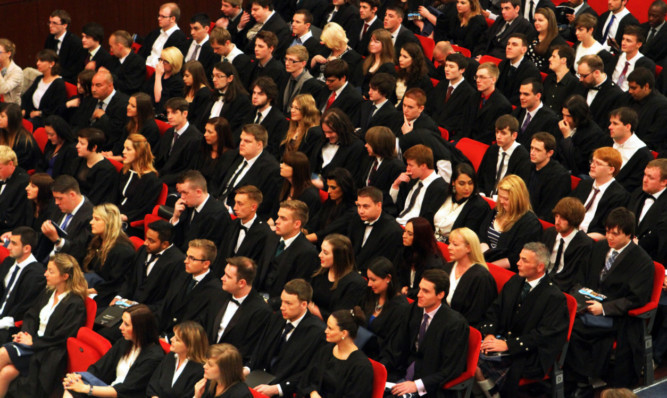Scotland’s universities have committed to achieving at least 40% female representation within their governing bodies.
The chairs of 18 higher education institutions have agreed to work towards the 40:40:20 gender target – 40% men, 40% women and 20% either gender.
The commitment will only apply to the independent, external members who form the majority of each governing body’s membership.
The remainder are elected by university staff, students and alumni, and Universities Scotland said it would work towards implementing the target for all members if staff and students made a similar commitment for their chosen candidates.
Women currently make up less than a third (32%) of all independent members across the 18 universities.
David Ross, chair of the committee of Scottish chairs and of the University of Glasgow’s governing body, said: “Our higher education sector thrives on diversity, whether that is diversity of opinion and perspective or the diversity of the 18 higher education institutions themselves, so we must do everything we reasonably can to ensure that our governing bodies – the place where strategic decisions are made – reflect and encourage diversity amongst their membership.
“This commitment can only extend as far as independent members of the governing body because staff and student stakeholders rightly have the freedom to elect their own candidates.
“We ask the students and staff in our institutions to consider making a similar commitment.”
Jennifer Craw, chair of the governing body at Robert Gordon University, said: “As chair of one of Scotland’s universities I am proud we are making a commitment to achieve a minimum 40% gender balance in our independently appointed board members.
“Robert Gordon University, like many others, is seeking to continue to enhance good governance and attract a diversity of talent, knowledge and skills to our board.”
Universities Scotland said measures being taken to attract prospective female governors will include more targeted advertising of vacancies and a relaxation of the requirement for previous board experience, but the body insisted that institutions remain committed to appointing the best candidates for the roles.
Professor Pete Downes, convener of Universities Scotland and principal at the University of Dundee, said: “The 40:40:20 approach to gender balance gives institutions some flexibility to ensure we continue to appoint the strongest candidates to what are strategically important roles.
“This is important for good governance, for the candidates themselves and to ensure that our universities remain competitive.”
The campaign for 40:40:20 gender representation in the UK is run by the organisation Women on Boards and the rule is well established in several European countries such as Norway.
Universities Scotland said the timescale for aiming to achieve the target would vary according to the circumstances of each institution but a progress review would be carried out in 2018.
